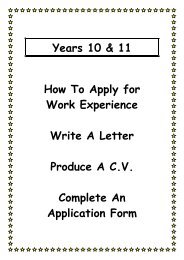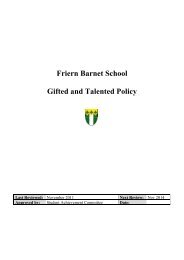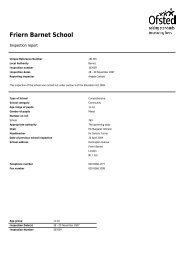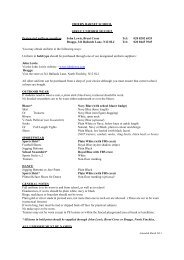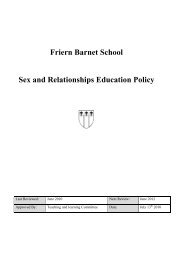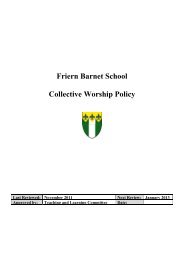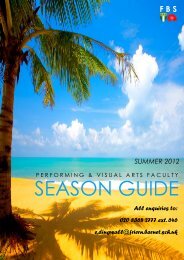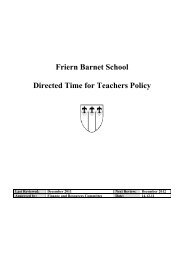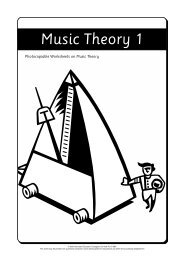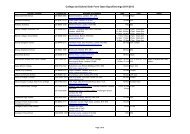VOL 166 Music Theory 2 - Friern Barnet School
VOL 166 Music Theory 2 - Friern Barnet School
VOL 166 Music Theory 2 - Friern Barnet School
You also want an ePaper? Increase the reach of your titles
YUMPU automatically turns print PDFs into web optimized ePapers that Google loves.
Name: ____________________ <strong>Music</strong> <strong>Theory</strong> 2 Worksheet<br />
SIGNS FOR REPETITION<br />
Often in music you will find various signs for repeating sections of a piece. This means that<br />
rather than writing out every repeat and adding many pages to the score you simply follow the<br />
signs. There are various signs in music to show that the music needs to be repeated. These may<br />
be used to show a repeat of a whole piece, a section or even particular musical notes in a bar.<br />
These vary quite widely and some are easier to work out than others!<br />
If you want to repeat one section exactly then drawing a double bar line with two dots either<br />
side of the middle line is the easiest way. Place one where you are starting the repeat and the<br />
other in the bar where you want the repeat to stop. Usually this is at the beginning and end of<br />
the bar but it can be put anywhere in the bar. You will still need to add in the barline if it is<br />
midway through the bar to make the bar add up correctly. If you are repeating back to the<br />
beginning of a piece then you can leave out the first set of dots.<br />
55555555555<br />
{55555555555<br />
repeat between these two points<br />
If the music changes the second time through you will need to draw in a first and second time<br />
bar, so that the performer knows where the music goes to. This is shown in the example below.<br />
`5()vv5bWQ+F55_(5<br />
1<br />
2<br />
.<br />
}<br />
A first and second time bar can extend over one or more bars and you simply extend the line<br />
to show how many bars.<br />
Sometimes in music you see the words Da Capo or D.C. for short. This means from the<br />
beginning. The end of the music is then shown by the word Fine and/or a pause mark .<br />
b<br />
4 4<br />
Dal Segno or D. S. means from the sign. You return to the point in the music marked with the<br />
sign and then play to the word Fine or the pause mark g<br />
. If there is a coda you may see<br />
the phrase D b al coda which means you repeat back to either the beginning or the sign b<br />
until you see the different sign n which means that you then play the coda to finish the piece.<br />
www.keynoteseducation.com © 2004 Keynotes Education Crossgate Cornwall PL15 9SX<br />
This sheet may be printed from a personal computer and/or photocopied for educational use within the purchasing establishment<br />
g<br />
21<br />
{




